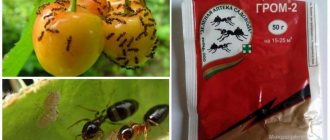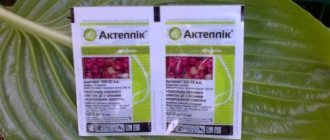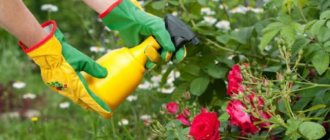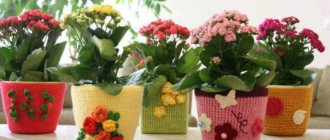- October 12, 2018
- Diseases and pests
- Efanova Irina
House flowers are not immune to pests. Thrips are considered frequent guests in the apartment. They are omnivorous insects, so they live on a variety of plants in the house. It is necessary to fight them without slowing down, as they actively reproduce. Let's consider what remedies for thrips on indoor plants are used at home.
Thrips - who are they?
Insects that grow on average to 1.5-2 mm, with an elongated body and wings, are thrips. There are more than 6,000 different species. All of them are omnivorous insects, and all indoor plants in an apartment or private house suffer from their appearance. They lead an active lifestyle in summer and winter. Thanks to the presence of powerful wings, they easily move from one flower to another and are able to carry infections that are dangerous to plant life.
These pests belong to sucking insect species. Thanks to their proboscis, they easily pierce plant leaves or young shoots and suck out the juice. They reproduce by laying eggs; they consider the underside of the plant leaves to be a secluded and safe place. It takes 1.5 months for one larva to grow to adulthood. After which the adult lives for another month.
Thrips on indoor flowers are divided into several types, but you won’t be able to determine which one has settled in the house on your own. This will require the help of an experienced insect specialist. But to combat thrips, it is not necessary to know the exact species. After all, all means are designed to combat the general class, and not individual subspecies of insects.
Causes of thrips
The main question most often asked by home flower lovers is the following: where do thrips come from on indoor plants? A list of reasons why they may appear is given below:
- Thrips prefer poorly ventilated areas. They consider musty rooms to be a favorable environment.
- They are attracted to rooms where the air temperature is 24 degrees Celsius or higher.
- When a new plant appears in the house, it must be carefully inspected. If the plant has been infected, then rapid reproduction of thrips will not take long.
Insects can get into the house from the street on any plants or clothing. If you have your own summer cottage, you should treat all plants more vigilantly. In summer, it is recommended to inspect plants for possible pests at least once a week.
How to recognize thrips in the house
It is difficult to recognize thrips on indoor flowers at an early stage. They are almost invisible because most of the time they live on the underside of the leaves. Due to the fact that they drink juice from domestic plants, visible changes occur in the structure of the leaves, and in general their condition worsens:
- pale stripes appear on the surface of the leaves, they are located in a chaotic order;
- small circles with holes form on the leaf, from which thrips drank juice;
- black clogged areas are easily visible on the leaves - pest feces;
- damaged leaves and flowers wither and fall off;
- young shoots of an infected flower become distorted.
Thrips reproduce quite quickly; one individual can lay up to 300 eggs.
The sooner you can apply a thrips remedy on indoor plants, the greater the chance that the plant will not die. There are ways that can help recognize pests on plants:
- Take a white piece of paper and carefully shake off the leaves of the flower over it. If the plant is infected, there will be adults or larvae on the leaf.
- It is recommended to carry out a visual inspection of the plant with a magnifying glass. This method helps to identify pests at an early stage.
It is necessary to carry out timely treatment with anti-thrips agents on indoor plants, without giving a chance for further reproduction.
Set thrips traps. They are made from a colored sheet of paper with a layer of glue applied to the top side of the sheet. They need to be placed close to the flowers, no higher than 1 m above the ground. Blue or yellow paper is suitable for traps.
Preventing the appearance of thrips on flowers
The earlier a pest is detected, the more likely it is that simple remedies will help deal with it. Before any event, diseased plants are separated from the rest and quarantined. The remaining flowers are carefully examined. It would be useful to sanitize the place where the flowerpots stood. This is usually done with a household solution. soap Even if there are no visual traces of the presence of thriposv, the top layer of soil (2–3 cm) is removed. Parasite eggs may already be laid there.
Observe precautions:
- Keep newly purchased flowers separately for at least 2-3 weeks (this will keep your home collection healthy).
- Once every 7-10 days, bathe all plants under a warm shower (this will help get rid of not only dust, but also possible mites, aphids and other pests).
- Excessive dry air creates “resort conditions” for the reproduction of insects.
- Regular inspection of indoor plants (do not forget to look under the leaves and at the very roots).
Advice. Gesneriaceae (Saintpaulias, Streptocarpus, Gloxinias) are bathed “head down”. The plant with the pot is turned over so that water does not get into the outlet. Lightly hold the soil in the pot with your fingers.
Pest control methods
At the first sign of thrips appearing on indoor plants, you have to act immediately. If you postpone the control process, there is a risk of their numbers increasing and affecting more house plants. At an ideal room temperature (22-25 degrees Celsius), they will reproduce within 6 days and double their numbers.
Thrips love flowers with blue buds. Their favorite types of flowers are:
- peonies;
- chrysanthemums;
- violets;
- ficus.
The main primary ways to get rid of thrips on plants is to quickly react and make immediate decisions:
- Isolate all infected plants. It is recommended to transfer flowers without unnecessary shaking, so that the larvae do not fall from the bush.
- Wash the plants - this is done with a warm shower.
- Remove all flowers and buds from the plant. It is in these places that thrips prefer to lay eggs.
- To get rid of larvae in the soil, it is better to remove the top layer of soil or replant the plant in a new post. When replanting, it is recommended to thoroughly wash the flower's measles system.
Having identified the flower varieties most often susceptible to infection, they can be divided in the table according to the favorite habitats and breeding places of thrips. Thanks to this information, it is easy to recognize thrips on indoor plants at an early stage (photos and the fight against them are described below).
| Variety | Favorite habitats | Place for eggs |
| Carnation, peony, chrysanthemum | Most often they are found in the upper half of the leaf or on a vein running down the middle of the leaf. | Flower and buds |
| Violet, ficus | Prefer the lower half of the leaf or are located relative to the edge of the leaf and on the reverse side | Flowers, buds and the inner side of the leaf near the stem |
After the initial steps have been completed, the plants should be treated with chemicals.
How to get rid of thrips on indoor plants?
Having realized that your indoor flowers are already affected by thrips, you should begin to act urgently:
- The first step is to move flowers infected with thrips to a separate room. However, you need to be very careful here, since during transportation the larvae may fall off the pot and move to neighboring plants;
- remove pests from the flower by placing it under the shower;
- treat all indoor plants in your apartment with special preparations. The following institutes will help you cope with thrips: Aktara, Mospilan, Fitoverm, Intavir, etc. To consolidate the result, it is recommended to re-spray after a week;
- It is recommended to install sticky blue or yellow traps around the perimeter of the plants;
- Having determined in which pots thrips have already appeared, it is necessary to remove the top layer of soil, and it is best to remove all the soil, wash the roots and replant the plants in the already treated soil;
- All parts of the plant where pests were found must be thoroughly washed.
How to fight thrips on indoor plants using folk remedies?
If you notice only a few thrips larvae and the plants are not yet completely affected, then you can choose milder ways to combat this pest, which folk remedies can help you with:
- An infusion is made from one teaspoon of chopped onion or garlic and a glass of water. A day later, when the product is ready, the plants are treated with it;
- you need to take dried marigold flowers in the amount of half a liter jar, fill the container with water to the top and leave to infuse for two days. When the time is right, the mixture is filtered and the plants are treated with it;
- You need to take 50 grams of fresh dandelion leaves or roots, add one liter of warm water and let it brew for three hours. After straining, it is necessary to spray the affected flower with the mixture;
- take 100 gr. chamomile, pour one liter of water and let it brew for 12 hours. After filtering, add 5 grams to the mixture. green soap, after which the plants are treated with it. After a day, the remaining product should be washed off under a warm shower;
- You will need dry crushed tobacco in the amount of half a glass, which needs to be filled with one liter of water and left for one day to infuse. The finished product should be filtered and an additional 1 liter of water added. This infusion is sprayed on sick plants;
- you need to take 50 grams. dry tomato leaves, add a glass of water and let the mixture stand for 3 hours. After straining, add water to the infusion to bring the volume to 1 liter. After this, the affected plant is sprayed with it;
- you need to take 50 grams. fresh flowering celandine, which can be replaced with 100 gr. dry raw materials. You need to add 1 liter of water to it and let it stand for 24 hours. Next, the infusion is filtered and the plants are processed;
- Sometimes spraying may not be suitable for thrips control. In this case, alternative treatment methods can be used. You need to take crushed garlic or turpentine, fill a small container with it and place it directly into the pot with the diseased plant. Then they put a plastic bag on top of the flower and wait for three hours.
Preventive measures
In order not to have to deal with thrips on the very first day after purchasing a plant, it must be chosen very carefully. Arriving home, he should be placed in a separate room and his condition monitored for two to three weeks. To prevent pests from spreading to other plants in your home, you must regularly carry out the following activities:
regularly inspect plants, paying particular attention to potential signs of pests; maintain optimal humidity in the room; keep sticky traps in the indoor plant growing area; Keep plants clean with a warm shower.
It is not always possible to completely destroy triops the first time. The fact is that after the measures taken, the larvae of this pest can remain outside the plant for a certain period of time, and subsequently can return again. Therefore, it is recommended from the very first day, when a houseplant appears in your home, to begin taking preventive measures, so that later you do not spend a lot of time and effort fighting these pests.
How to act correctly when treating with chemicals?
Chemicals are dangerous in their pure form for humans and animals. It is better to put the purchased product out of the reach of children and animals before use. Before use, it is recommended to study the instructions and dilute the product in the required proportions according to the rules.
Treatment is carried out in a well-ventilated area or outdoors if the thrips attack occurred in warm weather.
It is necessary to protect the respiratory organs with a mask (in extreme cases, use a scarf or gauze), and put gloves on your hands.
If the processing period occurred in the winter, then it is better to process the flowers in the bathroom. After spraying, it is not recommended to take out flower pots immediately; it is better if they stand behind a closed door for several hours.
It is prohibited to use products in the presence of children.
After completing the treatment procedure on indoor flowers (it will not be possible to get rid of thrips the first time, you will need a second one), it is recommended to wash the floors. It is necessary to remove any remaining product from the floor and possible fallen larvae, and also wash your hands with soap.
The treatment procedure must be repeated after 1-2 weeks, but if after the second treatment the pests have not disappeared, then you immediately need to change the product and repeat the entire process of spraying with poison in a new way.
Safety precautions when processing plants
The use of chemicals requires compliance with safety measures to avoid harm to the human body. That's why:
- In summer, it is better to process the plant outside, and in winter in the bathroom.
- To protect the respiratory system, you must use a gauze bandage or scarf.
- In the case of processing in the bathroom, it is better to place the flower with a pot on the bottom of the bath, after which all the leaves are carefully processed. After this, the flower should be left in a closed bath for some time. After processing, it is not recommended to immediately transfer the flower to its place.
- After the flower is removed from the bathroom, it must be ventilated and then washed thoroughly.
- After a week, it is better to repeat this process for greater effectiveness.
- If after two attempts to destroy parasites a positive effect does not appear, then you will have to change the drug. Perhaps thrips have managed to develop immunity to the substance used.
If you do everything correctly and show persistence, you will be able to get rid of any pests and thrips are no exception.
Drugs against thrips
There is a large selection of products to help fight these insects. In order not to waste money on treating indoor plants against thrips, it is better to choose the products recommended by experienced gardeners. Thrips are insects with a resistant reaction to chemicals and easily adapt to them; it is recommended to use proven products for treating plants:
- “Aktara” - the product is considered effective, since the solution, when it hits the plant, penetrates into the channels that carry liquid throughout the flower. Thus, after treatment, the pests drink the juice of the flower, and the poison penetrates their body. After the first 25-30 minutes, they stop drinking sap from plants, and within 24 hours they die completely. It is also recommended to water the soil with the solution, as larvae live in it.
- “Fitoverm” is a product suitable for use in an apartment. It causes paralysis in adult thrips, but will not kill larvae or dormant thrips. After treating the plants, the pests die within 2-3 days. Insects do not get used to the drug, so treatment is carried out several times to finally get rid of thrips.
- “Confidor” is a remedy for thrips on indoor plants, acting instantly when it enters the body of an insect. It is recommended to treat flowers by spraying their upper part, as well as watering them to completely destroy pests. Treatment is carried out several times to completely destroy insects.
- "Aktellik" - if you use this product correctly, you can defeat thrips on indoor plants from the first use. To do this, you need to properly dilute the product with water and thoroughly spray the plants.
- "Vertimek" - the solution is diluted in accordance with the description on the pack. The plants are sprayed with the prepared solution, a bag is put on the pot and secured tightly. It is better to remove the package no earlier than 24 hours after treatment.
It is recommended to treat indoor plants in the morning (from 7 to 9 am). During this period of time, thrips are most active.
Traditional methods of getting rid of pests
Folk remedies for thrips on indoor plants can help if a small number of larvae have been found that have not yet had time to multiply significantly. Otherwise, it is necessary to treat only with chemicals. The most effective means, according to flower growers, are the following:
- Liquid soap or grated soap is mixed with water. For 1 liter of water you will need about 100 ml of soap. The plant is treated with the resulting product; the leaves need to be treated most carefully. They are sprayed on both sides, after which the bush is wrapped in plastic film for 2-3 hours. After time has passed, the film is removed and the bush must be washed under running water.
- Finely chop or crush the garlic into a glass and pour boiling water over it. The resulting solution is left in a dark place for 24 hours. The leaves and stem of the plant are sprayed with the product.
- Celandine is finely chopped (if you have fresh leaves, it is better to use them, but dry ones can also affect pests). To get rid of thrips on indoor flowers as quickly as possible, mix 300 g of leaves with 1 liter of hot water. The solution is infused in a dark place for 2 days. When the product is ready, the plants are sprayed with it.
- A decoction of marigolds is prepared based on 1 liter: you will need half a liter jar of marigolds and 1 liter of water, the thoroughly mixed mixture is brought to a boil, over low heat for 5 minutes. Infuse for about 72 hours in a dark place; the finished liquid must be filtered through a strainer. Infected plants are sprayed completely.
- One way to get rid of thrips on plants is to use tomato leaves. In 1 tbsp. 50 g of leaves are dropped into water, leave the finished mixture for 3-4 hours. Afterwards it is recommended to strain it and dilute it with water to obtain a total volume of 1 liter. Start spraying the plants immediately after diluting the infusion with water.
- Tobacco is good for repelling pests. 100 g of tobacco is poured into a jar and filled with 1 liter of hot water. The liquid is left in a dark place for 2-3 days. The finished infusion is filtered through cheesecloth.
- Chamomile is one of the effective means for spraying house plants. 200 g of chamomile inflorescences are poured into a jar and filled with hot water, the liquid is left for 12-16 hours. To achieve full results, it is recommended to treat flowers with the prepared solution several times a day.
- A common pest control method is finely chopped garlic. It is folded into small boxes and placed around the stem of the plant. Next, the plant is wrapped tightly in a bag. Thrips cannot tolerate the pungent smell of garlic and suffocate from it.
All folk methods are not long-acting remedies; they generally last for several days. Therefore, it is recommended to re-treat after 3 days. Also, folk infusions are used after treatment with chemicals to prevent the appearance of thrips.
Fighting methods
If you find that infected leaves have appeared in your house, you must immediately take emergency action against thrips. Treatment must be timely.
You need to take the infected flowers to a separate room, but carefully, since during transportation the larvae can spill out of the pot and settle in any plant. It is advisable to try to detect the larvae and get rid of them. You need to remove all pests from the flower by placing it under a running shower. Afterwards, you can start processing the plants that are still in the room.
The best remedies for thrips are:
- Actor.
- Mospilan.
- Intavir.
- Fitoverm.
Control methods are very effective if the problem is detected in time.
Traditional methods
If thrips have just begun to infect plants, but the flowers are not yet seriously affected, then it is worth using milder methods of exterminating pests. Traditional methods will help with this.
- It is necessary to make an infusion from a teaspoon of pre-chopped onion and a glass of water. You can use garlic instead of onions. The product is ready in a day, after this time the plants can be treated.
- You need to get dried marigold flowers. You will need half a liter jar. It is necessary to add water and cook for 2 days. After the expiration date, the mixture must be filtered and treated with each plant.
- Fresh dandelion leaves or roots work well against thrips. You need 50 grams, which are poured with a liter of warm water and infused for 3 hours. Afterwards you need to strain and spray the mixture on the infected flower.
- You will need 100 grams of chamomile, which must be poured with a liter of water. Afterwards the product is infused for 12 hours. When the mixture is filtered, you need to add 5 grams of green soap, and then begin processing the plants. After a day, the product must be completely washed off the plant under a warm shower.
- Another effective remedy is crushed tobacco. You will need half a glass. Fill this volume with one liter of water and let it steep for a day. When the product is ready, you need to strain it and add another liter of water. Spray the plants with the resulting infusion.
- You need to take 50 grams of dried tomato leaves, add water and leave for 3 hours. When the product is filtered, you need to add more water. The result should be 1 liter of solution. Afterwards you can spray the plants.
- You will need 50 grams of fresh flowering celandine. It must be filled with one liter of water and left for 24 hours. The infusion is filtered, and you can begin processing the plants.
- It is not always acceptable to use spraying to control thrips. These options use alternative methods. You need to take crushed turpentine or garlic, fill a small container with it and place it in a pot with a diseased plant. It is better to put a plastic bag on top and wait for 3 hours.
Prevention measures
To protect your plants from thrips in advance, you need to prepare. Having brought home a new flower, you should put it in a separate room, where it should stand for 2-3 weeks.
His condition must be monitored.
Every day you need to inspect the plant and pay attention to the above-described signs of the presence of insects. The temperature and humidity in the room should be optimal. It is necessary to place sticky traps around the room. The plant should always be clean; to do this, place it under a warm shower. It is not always possible to destroy thrips the first time: the larvae can fall out of the plant, but later they will return if they are not found and thrown out.
Immediately after the appearance of a new plant in the house, preventive measures should be taken so as not to spend a lot of effort fighting thrips.
Prevention
In order not to have to use chemicals and traditional methods of getting rid of thrips on plants, it is recommended to follow simple rules of prevention. They will not be able to accurately prevent the possible appearance of pests in the house, but they can reduce the likelihood of their reappearance and further reproduction:
- New plants are placed in an isolated room for several weeks to monitor how they develop and whether they are infested with larvae. If they appear, since the flower is in quarantine, the spread of thrips to other plants is impossible.
- Plants must be kept clean. Use a warm shower once every 2 months. If there is heavy dust, wipe the leaves from dust.
- Monitor the room temperature and maintain moderate humidity in the rooms. Thrips prefer high temperatures and dry rooms.
- Ventilate the room at least 2 times a week. Some flowers do not respond well to drafts and temperature changes; it is better to remove such pots from a ventilated room.
- Inspect the plant for possible pests. The more often a visual examination is performed, the greater the chance of identifying an infection at an early stage.
When using remedies for thrips on indoor plants, you must remember that they cannot always help get rid of pests the first time. Sometimes it happens that the larvae do not fall into the zone of action of the poison, and then they can appear in the house again after a while.
3Folk remedies for thrips
If you are a supporter of traditional methods, then be sure to use our advice. They are no less effective against chemicals, but treatment of a houseplant may take longer.
- 150 g of dried medicinal chamomile flowers pour 200 ml. boiling water, leave for 24 hours, spray the plant with it once a day;
- pour turpentine into a deep container, place a flower in a pot in it, leave for 3 hours;
- Wash the leaves and stem in the shower with laundry soap;
- Grind the dandelions along with the leaves, add hot water, leave until the water reaches room temperature, spray the affected flower daily;
- Grate the onion on a fine grater, add 200 ml. warm water, leave for 3 hours and treat the houseplant.
Do not forget about prevention methods, keep the flowers clean, spray them regularly. Monitor the temperature and humidity level of the room where the plants are located.
Common mistakes made when fighting thrips
The most common mistakes made by inexperienced gardeners are when they try to remove thrips from houseplants in a way that is not required by the rules; this happens due to inexperience:
- processing is carried out once;
- during the daytime, flowers are treated with chemicals, which leads to burns;
- surface spraying of plants.
All these mistakes lead to ineffective removal of pests, and the period of combating them increases and becomes more complicated due to lost time.
Even if you follow all the rules and regulations for keeping house plants, there is no guarantee that thrips will not appear in the house. Therefore, the vigilance of the grower is the main weapon in the fight against them. Timely identified pests will not have time to cause severe harm to the plant, and they can be easily dealt with using traditional methods without the use of chemicals.
Reviews and advice from experienced flower growers
The most effective remedy that can cope with thrips is Actellik or Aktara. By following all the standards for treating plants and the room where they are located, you can get rid of pests from the first use.
You can get rid of thrips on indoor plants either by spraying or by immersing the plants in the prepared solution. This method is suitable for small potted plants.
The main thing is to remove all buds and flowers from diseased flowers. Otherwise, after a few days, a new generation of thrips may hatch from the eggs laid in them, and the treatment will have to be repeated.
Violet flowers do not particularly like moisture, so it is often not possible to spray them. Sticky traps and fly strips help control flying pests.











